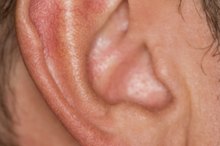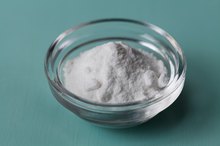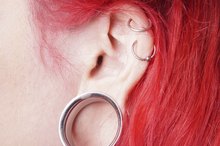Ear Wax or Swimmer's Ear?
It can be difficult to determine if pain in your ear is caused by an accumulation of ear wax or swimmer’s ear, a common type of ear infection. Both conditions share some of the same symptoms. Your doctor can quickly clear up any confusion regarding the cause of your pain and recommend treatment that will help relieve your symptoms.
If you are experiencing serious medical symptoms, seek emergency treatment immediately.
Ear Wax Blockage
Ear wax keeps dust and small bits of debris from entering your inner ear. Eventually ear wax makes it way to the outer portion of your ear, where you can remove it by washing. Although the ear is self-cleaning, some people routinely clean their ears with cotton swabs. While using a swab may remove ear wax, it may also push wax deeper into their ear canal, causing a blockage of the canal. A blockage may also occur if you produce too much ear wax and your ear doesn’t naturally remove the excess amount.
Swimmer's Ear
Smelly Ear Wax
Learn More
Swimmer’s ear occurs when a fungus or a bacteria found in soil or water grows in the outer part of your ear. The infection, also called otitis externa, develops when water is trapped in your ear after you swim, bathe or sweat. Prolonged exposure to humid weather can also increase moisture in your ear, according to MayoClinic.com. Bacteria or fungi may also enter your ear through small cuts that can occur when you clean your ear with cotton swabs, scratch your ear or wear headphones. Allergies to jewelry or hair products can affect the skin in your ear and lead to swimmer’s ear.
Symptoms
Both swimmer’s ear and an ear wax blockage can cause an earache, a feeling of fullness in the ear and hearing loss. If you have a wax blockage, you may experience tinnitus, a condition that causes noises or ringing in the ear. During the initial stage of swimmer’s ear, your ear canal may itch, look slightly red or pink and may discharge fluid. If you have swimmer's ear and pull on your ear lobe, you may experience pain. If you pull on your ear lobe if you have an ear wax blockage, you won’t feel pain.
As the swimmer’s ear infection progresses, you may notice an increase in pain and itching, fluid and pus discharge and increasing redness. Failure to treat the infection that causes swimmer’s ear can result in a fever, swollen lymph nodes, hearing loss due to ear canal blockage and intense pain in your neck, face and side of the head.
Swimmer's Ear
Baking Soda & Water for Ear Wax
Learn More
You can treat a mild ear wax blockage at home by placing mineral oil, baby oil or an over-the-counter ear wax removal product in your ear. Placing warm water in the ear from a syringe or bulb may also help dislodge the impacted wax. The National Institutes of Health's Medline Plus website warns against using this method if you think your ear drum could be ruptured. Irrigating your ear when you have a ruptured ear drum could cause injury or an ear infection. Your doctor can remove impacted wax that you are unable to remove at home.
Doctors prescribe acidic ear drops that contain either an antifungal or antibiotic medication to kill bacteria and a steroid to relieve redness and inflammation due to swimmer’s ear. In some cases, your doctor may remove excess ear wax or debris to allow the drops to penetrate your ear canal completely.
Related Articles
References
Writer Bio
Working at a humane society allowed Jill Leviticus to combine her business management experience with her love of animals. Leviticus has a journalism degree from Lock Haven University, has written for Nonprofit Management Report, Volunteer Management Report and Healthy Pet, and has worked in the healthcare field.







